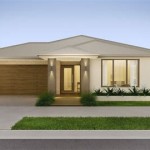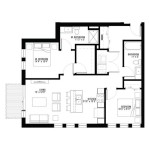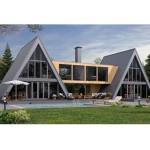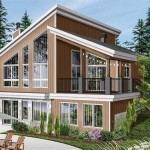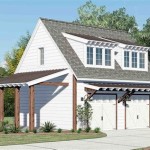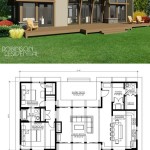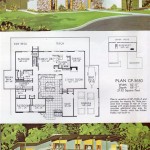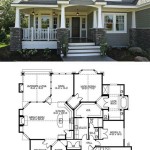French Country Farmhouse Plans: A Blend of Rustic Charm and Refined Elegance
French Country Farmhouse plans represent a popular architectural style that combines the rustic elements of traditional farmhouses with the sophisticated details of French provincial design. This fusion results in homes that are both inviting and elegant, offering a comfortable living space infused with character and charm. These plans typically prioritize natural light, open floor plans, and incorporate materials that evoke a sense of warmth and connection to the surrounding landscape.
The appeal of French Country Farmhouse architecture lies in its ability to create a welcoming and comfortable atmosphere. The design emphasizes functionality and practicality while maintaining an aesthetic that is both timeless and stylish. This style is frequently sought after by individuals and families looking for a home that reflects a sense of history and tradition, while also offering modern amenities and conveniences.
Understanding the key elements and considerations in French Country Farmhouse plans is crucial for anyone considering building or renovating a home in this style. This article will explore the defining features of these plans, the factors to consider when selecting a plan, and the common variations found within the French Country Farmhouse aesthetic.
Key Architectural Elements of French Country Farmhouse Plans
French Country Farmhouse plans are characterized by a distinctive set of architectural elements that contribute to their unique aesthetic. Recognizing these features is essential to understanding the style and ensuring that a chosen plan authentically reflects the desired look.
Exterior Features:
Common exterior features include steeply pitched roofs, often with dormers, which add visual interest and allow for increased attic space. Stucco or stone exteriors are prevalent, sometimes combined with brick accents. Decorative shutters, arched doorways, and window boxes filled with flowers further enhance the French provincial charm. Front porches, often covered, provide an inviting outdoor space. The use of natural materials like wood and stone is paramount, contributing to the rustic and organic feel of the design.Interior Layout:
Inside, French Country Farmhouse plans often feature open floor plans that promote a sense of flow and connection between living spaces. Large windows are strategically placed to maximize natural light, creating bright and airy interiors. The kitchen is typically the heart of the home, designed as a gathering space with a large island or breakfast bar. Formal dining rooms are often included, offering a space for more structured meals and gatherings. Mudrooms or entryways are common, providing a practical space for storage and organization.Material Palette:
The material palette used in French Country Farmhouse plans is crucial to achieving the desired aesthetic. Natural materials such as wood, stone, and brick are prominently featured. Inside, hardwood floors, exposed beams, and stone fireplaces are common. In the kitchen, countertops made of granite, marble, or butcher block complement the rustic cabinetry. Color palettes tend to be warm and inviting, with earthy tones such as creams, beiges, and browns dominating. Accents of blue, green, and yellow can be incorporated to add pops of color and visual interest.Roofing and Windows:
The roof is a dominant feature in French Country Farmhouse plans, often featuring multiple gables and dormers. Roofing materials can range from slate to cedar shingles, depending on the desired aesthetic and budget. Windows are typically multi-paned and can be either casement or double-hung. Shutters, either decorative or functional, add to the visual appeal. The use of arches and curves in window and door openings is another characteristic of the style.Considerations When Choosing a French Country Farmhouse Plan
Selecting the right French Country Farmhouse plan involves careful consideration of several factors. It's important to assess personal needs, lifestyle, and the specific characteristics of the building site to ensure that the chosen plan is a good fit.
Lifestyle and Family Needs:
The size and layout of the home should align with the needs of the occupants. Families with children may require multiple bedrooms, a playroom, and a large backyard, while empty-nesters may prefer a smaller, more manageable space. Consider how the floor plan will accommodate daily routines, entertaining, and future needs. Open floor plans are often favored for their ability to facilitate social interaction and create a sense of spaciousness.Budget and Construction Costs:
Building a home involves significant financial investment. It's crucial to establish a realistic budget and consider all associated costs, including materials, labor, permits, and landscaping. French Country Farmhouse plans can range in complexity and cost depending on the size, features, and materials used. Obtain multiple quotes from contractors to ensure competitive pricing. Consider the long-term costs of maintenance and energy efficiency when making material selections.Lot Size and Orientation:
The size and shape of the building lot will influence the type of French Country Farmhouse plan that is suitable. A sprawling lot may accommodate a larger, more elaborate design, while a smaller lot may require a more compact plan. The orientation of the lot is also important to consider. Maximize natural light by positioning windows to capture sunlight throughout the day. Consider the prevailing wind direction and landscape to optimize energy efficiency and outdoor enjoyment.Local Building Codes and Regulations:
It is essential to comply with all local building codes and regulations. These codes may dictate specific requirements for setbacks, height restrictions, and architectural guidelines. Contact the local planning department to obtain information on all applicable regulations. Review the selected plan with a qualified architect or engineer to ensure compliance and identify any potential issues.Customization Options:
Many French Country Farmhouse plans offer customization options that allow homeowners to tailor the design to their specific needs and preferences. Consider modifying the floor plan to add or remove rooms, adjust the size of the kitchen or bathrooms, or incorporate specific architectural details. Customization can significantly enhance the functionality and aesthetic appeal of the home. However, it is also important to be mindful of the budget and potential impacts on construction costs.Variations within the French Country Farmhouse Style
While French Country Farmhouse plans share common characteristics, there are variations within the style that reflect different influences and aesthetic preferences. Understanding these variations can help to narrow down the options and identify a plan that perfectly matches the desired look.
Traditional French Country:
This variation closely adheres to the original French provincial style, featuring stucco exteriors, steeply pitched roofs, and decorative shutters. The interior often includes formal living and dining rooms, as well as a large country kitchen. The material palette emphasizes natural materials such as stone, wood, and brick. Color schemes are typically warm and inviting, with earthy tones dominating.Modern French Country Farmhouse:
This variation blends the classic French Country elements with modern design principles. It may feature cleaner lines, larger windows, and more open floor plans. While natural materials are still prominent, they may be combined with contemporary elements such as stainless steel appliances, minimalist lighting fixtures, and sleek countertops. Color palettes may incorporate lighter and brighter hues, creating a more airy and contemporary feel.Rustic French Country Farmhouse:
This variation emphasizes the rustic and unrefined aspects of the farmhouse style. It may feature exposed beams, reclaimed wood, and distressed finishes. Stone fireplaces, wood-burning stoves, and handcrafted details add to the rustic charm. Color palettes are often muted and earthy, with a focus on natural tones and textures. This variation is ideal for those who appreciate a more relaxed and informal aesthetic.French Country Cottage:
This variation is characterized by its smaller size and cozy atmosphere. It often features a charming exterior with a steeply pitched roof, dormer windows, and a welcoming front porch. The interior is typically compact and functional, with an emphasis on maximizing space. Cottage gardens and outdoor living areas are often integrated into the design. This variation is ideal for those seeking a smaller, more manageable home with a whimsical and inviting appeal.Adapting to Regional Styles:
French Country Farmhouse plans can also be adapted to reflect regional architectural styles. For example, a French Country Farmhouse in the Southwest may incorporate elements such as adobe walls, exposed wooden beams (vigas), and vibrant color accents. A French Country Farmhouse in the Northeast may feature clapboard siding, a wraparound porch, and a more subdued color palette. Adapting the plan to the local context can enhance its appeal and create a sense of connection to the surrounding environment.In conclusion, French Country Farmhouse plans provide a versatile and appealing option for those seeking a home that blends rustic charm with refined elegance. By understanding the key architectural elements, carefully considering personal needs and site characteristics, and exploring the various stylistic variations, individuals can select a plan that creates a truly unique and inviting living space.

French Country House Plans Style Home

French Country Floor Plans Madden Home Design

Plan 72226 French Country House Plans With 3302 Sq Ft 5 Beds

Plan 66248 French Country House With 3193 Sq Ft 4 Bedroom

Home Plan Avignon Sater Design Collection

French Country House Plans Houseplans Blog Com

French Country Home Plans Design Basics
Dream French Country House Plans Floor Designs

French Country Transitional Bainbridge Design Group

Plan 48033fm Petite French Cottage Country House Plans Style
Related Posts

